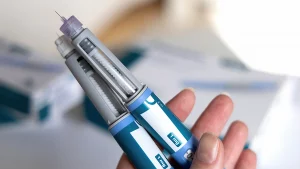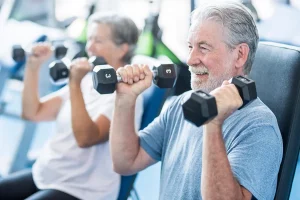Having good fitness while young can really pay off when it comes to cancer risk later in life.
New research found that cardiorespiratory fitness — the ability to do aerobic exercise — was associated with up to 42% lower risk of nine cancers, including head and neck, esophagus, stomach, pancreas, liver, colon, kidney and lung.
Researchers used Swedish registry data up to the end of 2019, covering background information, medical diagnoses and deaths for male conscripts who started their military service between 1968 and 2005.
The conscripts were age 16 to 25 when they started their service and had a battery of assessments at that time, including height, weight (body mass index), blood pressure, muscular strength and cardiorespiratory fitness.
Those who had a low level of cardiorespiratory fitness were slightly more likely to be obese and more likely to have a history of alcohol and substance misuse. They were also more likely to have parents with lower educational attainment than their counterparts who had a higher fitness level.
More than 365,000 conscripts had a low level of cardiorespiratory fitness. More than 519,000 had a moderate level and nearly 341,000 had a high level.
The final analysis included more than 1 million men, about 7% of whom later developed cancer in at least one site during an average monitoring period of 33 years.
Those with higher cardiorespiratory fitness had a lower risk of developing specific types of cancer.
The benefits from having higher cardiorespiratory fitness included a 5% lower risk of rectal cancer, a 12% lower risk of pancreatic cancer, 18% lower risk of colon cancer, 19% lower risk of head and neck cancer, 20% lower risk of kidney cancer, 21% lower risk of stomach cancer, 39% lower risk of esophageal cancer, 40% lower risk of liver cancer and a 42% lower risk of lung cancer.
Oddly, better cardiorespiratory fitness didn’t improve all cancer risk. It was associated with a 7% heightened risk of prostate cancer and a 31% heightened risk of skin cancer. Prostate cancer screening and exposure to sunlight (possibly while exercising) might account for these findings, wrote the authors, who included Dr. Aron Onerup of the Department of Pediatrics at the University of Gothenburg Institute of Clinical Sciences in Sweden.
The findings were published online Aug. 15 in the British Journal of Sports Medicine.
These findings are in line with the American Society of Clinical Oncology guidelines on exercise during cancer treatment, the authors said, but the study is still observational and can’t prove cause-and-effect.
Other lifestyle factors may also play a role in cancer risk, and the study didn’t track changes in cardiorespiratory fitness over time or gather participant genetic information.
“This study shows that higher fitness in healthy young men is associated with a lower hazard of developing nine out of 18 investigated site-specific cancers, with the most clinically relevant hazard rates in the gastrointestinal tract,” the authors said in a journal news release. “These results could be used in public health policymaking, further strengthening the incentive for promoting interventions aimed at increasing [cardiorespiratory fitness] in youth.”
More information
The U.S. Centers for Disease Control and Prevention has more on prevention and early detection of cancer.
SOURCE: BMJ, news release, Aug. 15, 2023
Copyright © 2025 HealthDay. All rights reserved.
















